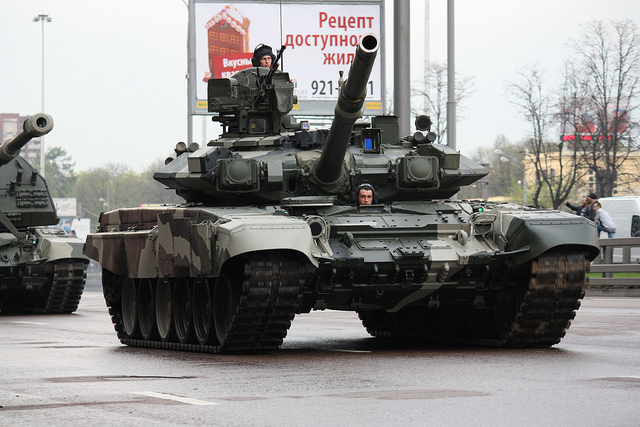Sea, air and land updates
Posted By
Dione Hodgson, Ashleigh Sharp and Lachlan Wilson
on July 19, 2016 @ 12:30

Sea State
The USN has been restricted from using low-frequency active sonar in some ocean areas because it can injure whales and other marine life. A federal appeals court found on 15 July that the USN had been wrongly permitted to use low-frequency sonar during training, testing and routine operations, overturning a previous lower court decision. The lower court decision had upheld approval granted by the National Marine Fisheries Service in 2012 which allowed the USN to use sonar during peacetime operations in the Pacific, Atlantic and Indian oceans and the Mediterranean Sea. The decision means the USN won’t be able to use the sonar to detect submarines in certain marine habitats. Ecowatch has taken a look at the effect sonar—and other industrial noise—has on marine life.
Blast from the past: The National Oceanic and Atmospheric Administration—with help from the USN and Boeing—captured the first clear images of the radioactivity-polluted USS Independence on the ocean floor last Thursday. Using a robotic underwater vehicle, scientists were able to map the wreck of the WWII aircraft carrier, which was deliberately sunk off the coast of Half Moon Bay by the USN in 1951. The ship faced its fair share of damage during its 10 years of service—it was heavily damaged during nuclear weapons testing at Bikini Atoll in 1946, turned into a floating nuclear decontamination site while stationed in a shipyard in San Francisco, and was then scuttled by two torpedo warheads while laden with barrels of radioactive waste.
Flight Path
Lockheed Martin’s CEO Marillyn Hewson said last week that the cost of the F-35 is down 57% from the first aircraft that was delivered and that it’s on track to be US$85 million a piece by 2019. To drive down costs, Lockheed will need to increase production of jets from four per month to 17 per month by 2019—and production does appear to be ramping up, as per successive budget plans. As many of the problems the JSF program has faced seem to be in the past, Popular Mechanics has looked at how the aircraft will be used in the future. As the F-35 edges closer to IOC, General Hawk Carlisle, commander of Air Combat Command, has suggested that one of its first missions might be to conduct air policing in the Baltic region.
Innovation in aircraft design is becoming increasingly desirable as the spectrum of threats and roles across the globe grows—and some companies are heeding the call to push the envelope. A new article from Defense One looks at the ways companies are moving towards aircraft designed for quick and easy modification—like the B-21 bomber, which will use an open-architecture computer system that’ll accept upgrades with ease. Meanwhile, the Pentagon’s Strategic Capabilities Office and other government agencies like DARPA are focusing on new ways to amass firepower, like swarming unmanned aerial systems and hypersonic weapons.
Rapid Fire
Russia’s military capabilities are being closely examined at the moment, in light of an announcement last week that the Russian Army plans to deploy an advanced S-400 missile-defence system in occupied Crimea—in addition to its recent efforts to bolster its presence in eastern Europe. An article published this week on War on the Rocks questions the belief that Russia has traditionally favoured quantity over quality to achieve its military success. While the volume of Russia’s forces appears intimidating—particularly given that the organic strength of Russia’s armed forces is currently 1,884,829 people (which is more than 90% of Perth’s current population)—its new battlefield capabilities are just as impressive. For an in-depth look at Russia’s tank force, check out a recent article by The National Interest that details everything you need to know about the Kremlin’s metal beasts.
Last Thursday, the US and the UK announced a program to fast track the final stages in the development of autonomous and robotic systems to resupply soldiers in difficult terrain. The program will see a series of trials involving ground and air drones begin in October next year. The program will conclude in 2019, with a final trial event to integrate a variety of technologies into one system.
And now for something completely different: the New Zealand Defence Force has released information showing that it purchases 46,165 pairs of socks each year as a part of its US$20 million uniform budget. Breathable, anti-microbial and in muted colours, the current sock range includes cold, temperate and hot temperature bands. They’re now looking for the perfect pair as they assess tenders for a new sock supplier.
Dione Hodgson, Ashleigh Sharp and Lachlan Wilson are research interns at ASPI.
Article printed from The Strategist: https://www.aspistrategist.org.au
URL to article: https://www.aspistrategist.org.au/sea-air-land/
[1] The USN has been restricted: https://www.theguardian.com/us-news/2016/jul/16/us-navy-banned-from-using-sonar-that-harms-dolphins-and-walruses
[2] federal appeals court found: http://cdn.ca9.uscourts.gov/datastore/opinions/2016/07/15/14-16375.pdf
[3] taken a look: http://www.ecowatch.com/sonic-sea-sounding-the-alarm-on-ocean-noise-1891131711.html
[4] captured the first clear images: http://sanctuaries.noaa.gov/shipwrecks/independence/
[5] ship faced its fair share: http://www.stripes.com/news/scientists-find-radioactive-aircraft-carrier-off-san-francisco-coast-1.340635
[6] cost of the F-35 is down 57%: http://www.cnbc.com/2016/07/11/lockheed-martin-ceo-price-of-f-35-jets-down-57-percent.html
[7] ramping up: http://taskandpurpose.com/f-35-program-finally-getting-act-together/
[8] successive budget plans: http://www.aspistrategist.org.au/2017-usaf-budget-f-35a-price-and-production-schedule-update/
[9] how the aircraft will be used: http://www.popularmechanics.com/military/a21703/f-35-first-transatlantic-flight-us-uk/
[10] edges closer to IOC: http://www.bloomberg.com/news/articles/2016-07-14/lockheed-s-f-35-could-be-deployed-for-combat-this-year-if-needed
[11] air policing in the Baltic region: http://nationalinterest.org/blog/the-buzz/coming-russias-doorstep-americas-stealth-f-35-joint-strike-16966
[12] aircraft designed: http://www.defenseone.com/business/2016/07/flexible-flyers-companies-race-equip-warplanes-quick-modification/129950/?oref=d-river
[13] new ways to amass firepower: http://www.defensenews.com/story/defense/show-daily/farnborough/2016/07/10/air-force-arsenal-plane-uas-firepower-hypersonics/86524792/
[14] capabilities are being closely examined: http://nationalinterest.org/feature/just-how-dangerous-russias-military-16981?page=2
[15] deploy an advanced S-400 missile-defence system in occupied Crimea: http://www.rferl.org/content/russia-crimea-antimissile-system-s-400/27860314.html
[16] in eastern Europe: http://www.reuters.com/article/us-nato-russia-kaliningrad-idUSKCN0ZL0J7
[17] An article published this week: http://warontherocks.com/2016/07/was-the-russian-military-a-steamroller-from-world-war-ii-to-today/
[18] the organic strength of Russia’s armed forces: http://tass.ru/en/defense/887144
[19] 90% of Perth’s current population: http://australiapopulation2016.com/population-of-perth-in-2016.html
[20] new battlefield capabilities: http://www.smh.com.au/world/nato-rethinks-strategy-after-russias-renewed-military-power-show-in-syria-20160319-gnm8s1.html
[21] everything you need to know about the Kremlin’s metal beasts: http://nationalinterest.org/blog/the-buzz/everything-you-need-know-about-russias-lethal-tank-force-17013
[22] US and the UK announced a program: http://www.upi.com/Business_News/Security-Industry/2016/07/15/US-and-UK-to-study-robotic-troop-re-supply/6481468589487/
[23] October next year: https://www.gov.uk/government/news/uk-and-us-look-to-robotics-help-for-last-mile
[24] purchases 46,165 pairs of socks each year: http://www.stuff.co.nz/dominion-post/news/81856584/defence-force-buys-more-than-90000-socks-per-year
 Print This Post
Print This Post